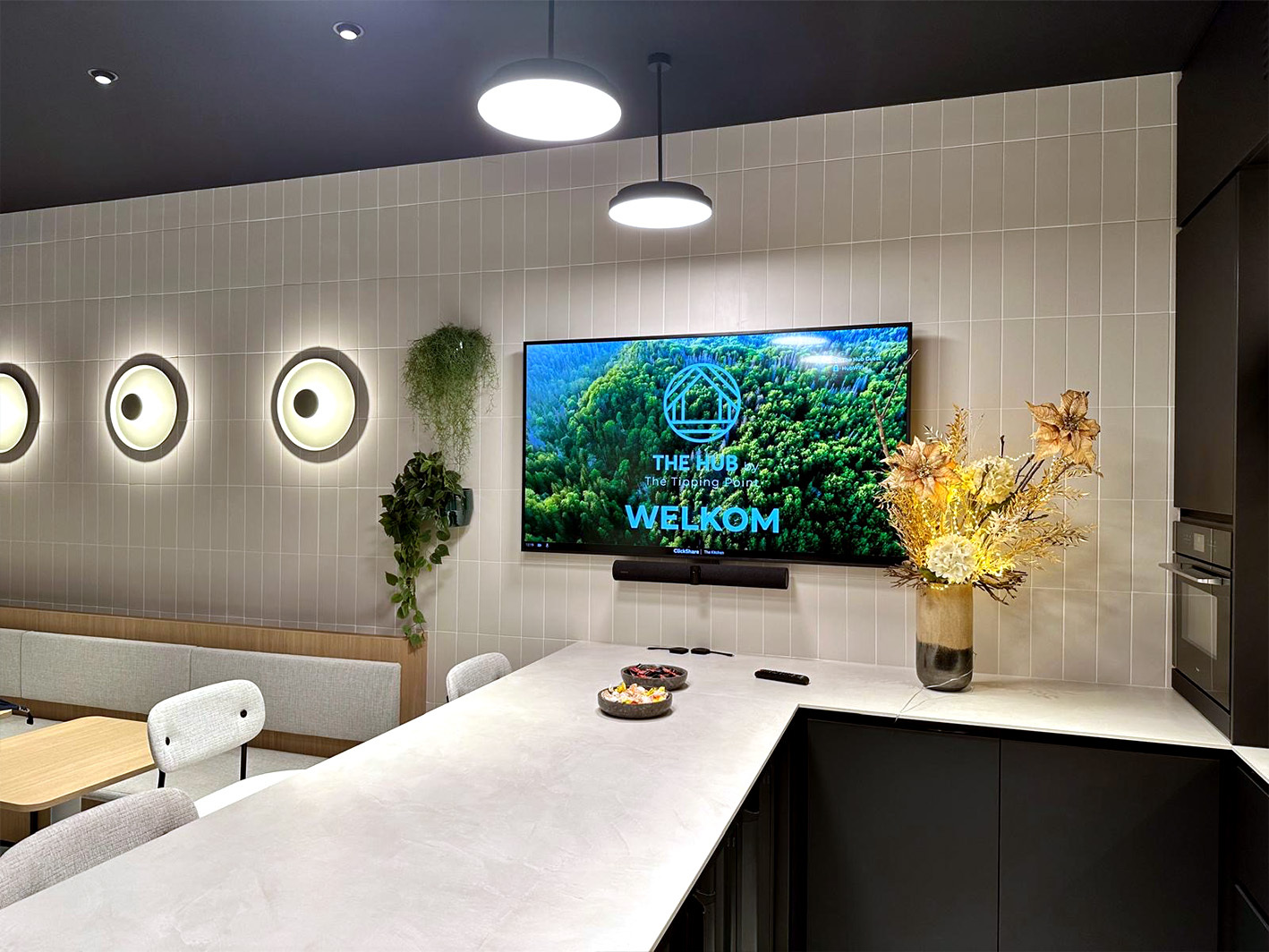Find the Right Path with Metrics and Dare to Change Direction
In today's dynamic work environment, space management is crucial. Measuring usage goes beyond occupancy rates; it includes diverse metrics such as density, peak usage, and the ratio of assigned versus flexible workspaces. These metrics provide a comprehensive view of workspace utilization and help organizations optimize and adapt work environments to meet changing employee needs. By analyzing this data, our clients improve inefficiencies in workplace experiences.
Social Hubs
Create more social square meters for interaction. Integrate significantly more greenery into the workplace. Quality time for collaboration with colleagues is the new normal at work. Work environments should reflect this. Aim for inspiring spaces for interaction, knowledge sharing, and co-creation.


Less is More
Simplicity remains a key business value, especially in an era where technology evolves rapidly. Using an integrated ecosystem reduces complexity by consolidating different systems and processes. This enables more efficient work, minimizes errors, and accelerates data-driven decision-making. A simplified approach not only supports daily operational tasks but also contributes to broader business goals such as cost savings and increased employee engagement. Reducing redundant processes and focusing on core activities significantly boosts productivity.
Engage Your Colleagues
By involving teams from the start in the rollout of a Smart Office, engagement and acceptance of desk booking are enhanced. Achieve this by gaining insights into work habits, collecting feedback, and consulting them on desired features of the booking system (parking, catering, and other services).
Always Connected
Implementing a connected workplace is another critical step for modern organizations. A connected workplace integrates people, processes, and technology to promote seamless communication and collaboration. This is particularly useful for large companies with multiple locations, as it helps optimize resources and improve operational efficiency. It also provides benefits in data security and regulatory compliance through centralized data management. Additionally, a smart workplace enhances work-life balance by offering flexible work options.

Deeper Insights into Space Management
Space management involves various aspects such as occupancy rates, density, and peak usage. Occupancy rates measure how much of the available space is being used, while density reflects the ratio of employees to available space. Peak usage analyzes the moments when the space is most intensively utilized. Combining these metrics provides our clients with a detailed view of office usage.
The Power of Simplicity
Simplicity in business processes can be achieved by using integrated ecosystems that bring together various systems and processes. This reduces complexity and enables more efficient work. Such an integrated platform offers a single interface for managing all essential functions, from maintenance schedules to space management and asset tracking. This minimizes the chance of errors and allows for faster decision-making based on real-time data.



Our Key Takeaways
- Optimize Space Usage: Use detailed metrics such as occupancy rates, density, and peak usage to get a complete view of how workspaces are utilized. Adapt workplaces based on this data to reduce inefficiencies and enhance employee experience.
- Simplify Business Processes: Implement integrated platforms to consolidate various systems and processes. Reduce complexity and increase efficiency by eliminating redundant processes and focusing on core activities.
- Create a Connected Workplace: Integrate people, processes, and technology to promote seamless communication and collaboration. Use technologies like IoT, cloud computing, and AI to create a productive ecosystem.
- Make Data-Driven Decisions: Analyze real-time data to make better-informed decisions. Use these insights to save costs, improve regulatory compliance, and boost overall operational efficiency.
- Support Flexible Work Options: Offer flexible work options to support a better work-life balance. Provide a workplace that facilitates both physical and virtual collaboration, contributing to higher employee satisfaction and productivity.
By combining these strategies, companies can create a flexible and productive work environment that not only increases efficiency but also promotes employee satisfaction and well-being. Effectively managing space, simplifying processes, and implementing a connected workplace are crucial steps for modern organizations to remain competitive and ensure long-term success.
